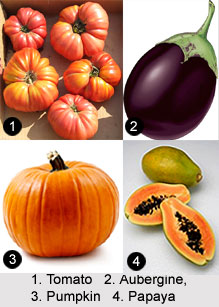 The arrival of the Europeans changed the scenario of the culinary of India. Indian food was introduced to a huge compilation of cooking. When the Portuguese started trading with Indians, they brought with them various spices and an assortment of vegetables in the country. Moreover, they started influencing the whole Indian culture as well as food habit. Portuguese influence on Indian Food was seen since the decade in 1498, when Vasco da Gama entered India. The Portuguese journey to India has led to significant changes in the culinary art of Goa.
The arrival of the Europeans changed the scenario of the culinary of India. Indian food was introduced to a huge compilation of cooking. When the Portuguese started trading with Indians, they brought with them various spices and an assortment of vegetables in the country. Moreover, they started influencing the whole Indian culture as well as food habit. Portuguese influence on Indian Food was seen since the decade in 1498, when Vasco da Gama entered India. The Portuguese journey to India has led to significant changes in the culinary art of Goa.
The cuisine of Goa much reflects the Portuguese influence on Indian Food. The taste involves of tangy, spicy and delicious delicacies. Portuguese influence introduced the Indians to Prawn balchao and Pork vindaloo which has taken over the Goan cuisine since that period till the present time. Portuguese food is all about convergence of flavours and influences. The cooking style of Portuguese has shaped the repertoire of Goan dishes. Goa is the place where the three major communities in India such as Hindus, Christians and Muslims reside. This confluence of all the religions along foreign influence has contributed to the local food.
Portuguese influence on Indian Food is exhibited in the handling of exotic fruits and roots such as potato, tomato, pumpkin, aubergine, cashew nut, chilli, papaya, passion fruit, pineapple and guava. Various herbs such as coriander, red and dried variety of chillies, garlic, and turmeric ground with vinegar complete the Portuguese recipe so as Goan cuisine. The Portuguese Influence also includes the intake of sweets. Goa offers Indo-Portuguese recipes of sweets like dedos da dama, petas de freiras, pasteis de natas, pasteis de Santa Clara. These sweets are popular as dessert in Goan Christian communities. In addition to sweets, the Portuguese brought to Goa their guisados, caldei-radas and assados prepared with fish and meats.
Furthermore, Portuguese influence on Indian Food was popularized during the reign of
Alfonso de Albuquerque. The mixed marriage policy or Politica dos Casamentos have influenced the food habits of the mixed race. The Portuguese also introduced meats such as beef and pork. Food items such as breads, meats and vinegar were brought to Goa by the Portuguese. Food and recipes were modified after the coming of the Portuguese to India. These recipes add flavour to Indian palate and introduce dishes such as sarabulho, vindalho, cabidela and feijoada made of pork.




















